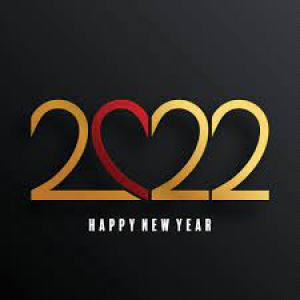Peter MALONE
May 2022 be a year with heart.
May 2022 be a year with heart.
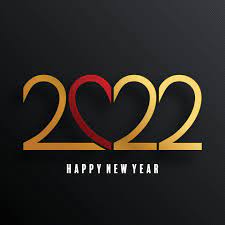
Blessings for New Year and 2022
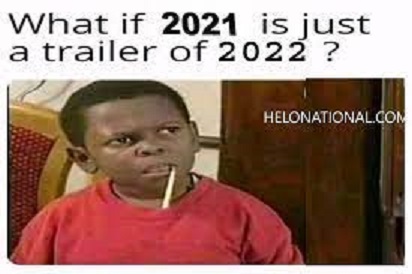
And not forgetting the tragedies of 2021, in Afghanistan, Myanmar, Yemen, Sudan, Ethiopia and Tigre, as well as the nations who have not received sufficient vaccines for covid protection.
Who Shot Biggie and Tupac?

WHO SHOT BIGGIE AND TUPAC?
US, 2018, 84 minutes, Colour.
Soledad O’Brien, Ice T.
Directed by David Metzler.
For 25 years, Americans have been intrigued by the drive-by shootings of rap singers, Tupac Shakur and Biggie Smalls. Both were recording artists, Tupac noted for his gangsta rap lyrics and associations. There were rivalries between record companies, especially Death Row, managed by Suge Knight. Despite investigations, no one has been charged. A number of those associated with the deaths, including Knight, are in jail. There have been many criticisms of the LA police force, individuals, allegations of being on the payroll for Knight and his security team.
In 2009 there was a feature film interpretation of the events, Notorious. Over the decades there have been many documentaries. In 2018, there was a feature film, City of Lies, taking up the case again, especially the killing of Biggie Smalls in Los Angeles, 1997, and the role of the detective, Russell Poole, involved initially, sidelined by the police force, personally discredited, yet pursuing his investigations for 20 years. In this film he is played by Johnny Depp. Forest Whitaker plays a journalist who collaborates with Poole, their investigations bearing down on Los Angeles police members and shooters associated.
This documentary was produced by HBO and bears disclaimers at the beginning of the film as well as the end, that these are particular scenarios, plausible, unproven, but for the consideration of the audience.
This time the cases are investigated by actor/ journalist Soledad O’Brien and veteran rap star, Ice T. 20 years after the events, they team together, track down quite a number of the people involved, interview them, record them, have a number of meetings throughout the film to discuss the data that they have, speculations about responsibilities, phone calls to Suge Knight in prison (and his disclaimers of all knowledge and connections), Reggie Wright Jr, in charge of Knight’s security (and under house arrest during the interviews). They are evasive, to say the least.
The investigations, and discussions with other journalists, mention of the investigations by Russell Poole, 9 number of names of corrupt police in the LA force, targeting some in particular, and getting information about possible shooters.
The case has intrigued the American public for a quarter of a century – and, on the evidence of this film, will continue to do so. There was a television series, Unsolved, in 2018, In 2021, a documentary, Biggie, I Got a Story to Tell.
Delicieux/ Delicious
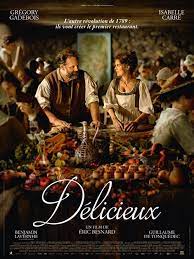
DELICIEUX/ DELICIOUS
France, 2021, 112 minutes, Colour.
Gregory Gadebois, Isabella Carre, Benjamin Lavernhe, Guillaume de Tonquedoc, Lorenzo Lefebvre.
Directed by Eric Besnard.
French cuisine! Who can resist? And the title so apt.
But, what we didn’t know about French cuisine is that the restaurant was a French invention of the 18th century. Prior to that, there were inns for travellers passing by, meagre meals, watering and the tending of horses and travellers moving on. This was taken for granted.
But, in the meantime, in the palatial dining room and large kitchen is of the Duke of Chamfort, elaborate menus, 9 to 12 courses, were being prepared for the arrogant Duke and his guests. The Duke’s opinion was that the plebs had no right to good food, could not appreciate it. As his guests gobble and quaffed, the chaplain gives them a little speech on gluttony as a cardinal sin (completely blind to his own arrogant pride).
The cook is Marencon, a big and burly man, Gregory Gadebois (who could pass for Anthony Hopkins larger brother). He is devoted to his work, to his large staff, including his teenage son, Benjamin, and is dependent on the Duke’s favour. There is a substantial scene where Marencon is brought before the guests for judgement, initially enthusiastic favour, then the priest denouncing the specialty (a delicious) of truffle and potato, throwing it to the floor, and veering the discussion to mocking condemnation – and the firing of Marancon.
He is a sympathetic figure, dismayed at falling out of favour, eager to be reinstated. He lives with his son in an old barn with a long-time acquaintance, not wanting to cook. Then he encounters Louise (Isabelle Carre), who tells him she made jams and wants to be his apprentice. He does not approve of women chefs! She has to do all the menial work. However, she gradually finds her place in the kitchen, finally revealing who she really is and why she is working with him.
Just as Marancon later found a new lease of life, the Duke announces that he will stop by the inn, a huge menu to be prepared, instructions as regards decor for a celebration. When this doesn’t happen, there is a crisis for Marancon and complications for his relationship with Louise and a surprising revelation twist of who she really is.
In fact, this is 1789, rumours of revolution, the populace often poor and starving, reference to the King and Versailles – and the audience for the film in revolutionary vein in hostility towards the Duke.
There is some vengeance on unmasking of the Duke for the audience’s satisfaction. However, there is a more positive outlook for the film, the realisation that ends in stopping stations for watering horses being much more, set menu, table set, spacious room, inside and outside, personal waiters and attention, proper ordering of courses, slices of bread… And the makings of what we take for granted as restaurants. So, French cuisine and restaurants, Vive La France.
And the epilogue to the film (apart from a zesty flour fight between Marancon and Louise) is information that soon after this, the Bastille was invaded.
- The title? A food film? The tropical and potato delicacy? The name of the restaurant?
- The 1789 setting, the prelude to the French Revolution, the border of the aristocracy and their arrogance, contempt of ordinary people, the lives of ordinary people, poverty and starvation, references to the King, the final information about the fall of the Bastille?
- The setting, at the Castle of the Duke of Chamfort, costumes and decor, the Palace, the dining, the table, the lavish food, the kitchen and the staff, the detail of work? The contrast with the countryside, the poor accommodation, developed as an Inn, the development for the restaurant? Inside space, outside, the kitchen? The musical score?
- The scenes of cooking, the opening, detailing the kitchen, the preparation of the truffle and potatoes, the various dishes, the elaborate menu, the serving of the food, at the table, the reaction of the aristocracy, the priest throwing the truffle on the floor and its condemnation? Further scenes of cooking, in difficult circumstances, the development of the kitchen, the preparation of food, the preparation for the Duke’s banquet, the serving of the food in the restaurant? The musical score and backing, tones of the 18th century?
- The story of Marencon, his talent as a cook, service of the Duke, taken for granted subservience to the Duke, his kitchen staff, the presence of his son, the detail of work, perfectionism, the serving of the food? His being brought before the Duke and guests for judgment, the reputation of the Duke and his wanting to go to Paris, the praise of the food, the detailed praise, the condemnation by the priest, the embarrassment of the guests, their turning against the cook, the elaborate condemnations, the Duke, humiliated, sending Marencon away? His son going with him? His son, bookish, age, revolutionary ideas and expressions?
- Marencon in the countryside, his friend, staying with him, the talk, Marencon dispirited? His hopes to be reinstated, to be taken to Paris? The contrast with his son?
- Louise, her sudden presence, age, her story, making jams at the home of the Duke, the request to be an apprentice, Marencon’s suspicions, her persuading him to take the money, his responsibilities? Getting her to do all the menial work, the washing, with the animals? His disapproving of women being chefs? His suspicions of her, that she was actually a prostitute, her new spin on her story, the brothels? The final revelation of the truth, her being a Marquisse, her husband, the financial deals with the Duke, the Duke profiting by her husband, hanging him? Her wanting revenge, planning to kill the Duke via the food? Her attempt with the poison, the death of the chickens, her being exiled by Marencon, going to the convent, his collapse and being dragged by the horse, Louise tending him and bringing him back? His going to the convent, her return, helping with the banquet, the plan to kill the Duke? The dinner, manifesting herself to the Duke, his reaction, his fears, the threats?
- Hyacinth, working on behalf of the Duke, the plan for him to visit the in, have a meal? The plan, the menu? Marencon coming alive? The detail preparation, outside, the background paintings, the range of food, the menu, the difficulties, the accident and the fire, Marencon’s hands, Louise taking over, her determination? And the Duke riding by and ignoring the meal?
- The Duke, the arrangement for the meal, with his mistress, her liking the potatoes and truffles? The preparation for the meal? Louise confronting the Duke? The Duke, his attitude towards the people, that the food was wasted on them, their lack of taste and abilities?
- The meal, the locals helping with the serving, the past with the poor children and Marencon baking bread for them? Kitchen work, Benjamin and his contribution? The serving of the Duke and the mistress? Then the bringing in of the other visitors, inside and outside, the tables, the offer of free food and dining with the Duke? His arrogant reaction, the reaction of the mistress, while eating the delicacy? Duke, the denunciation, the removal of his wig, his retreat in fright?
- Hyacinth, his reaction, his theories about servants creating order, removal of his wig, becoming a waiter at the restaurant?
- The various scenes of visitors to the inn, meagre meals and soups, watering of the horses? The vision of the restaurant, Louise and her vision, Benjamin and his urgings, Marencon and his response? The idea of restaurants, people freely coming, setting of tables, slicing of bread, the order of the meals, finishing with desert? The response of people? And the continuing tradition?
Richard Linklater: Dream is Destiny
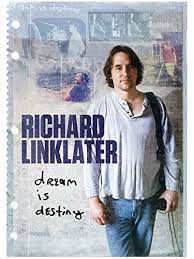
RICHARD LINKLATER: DREAM IS DESTINY
US, 2016, 91 minutes, Colour.
Directed by Louis Black, Karen Bernstein.
This documentary was made while writer-director Richard Linklater was working on his film Everyone Has Some. (Linklater has continued to write and direct films since 2016.)
The film is codirected by Linklater’s friend and mentor, Louis Black, producer, editor of the Austin Chronicle. There are many sequences with their discussions, Linklater going through boxes of files and documents, especially his detailed annotated diaries from the past.
The film introduces its subject with various clips from a range of films, from his initial classic, Slacker, and reference to the history of the making of Boyhood.
The film serves as providing a biography of the director, his Texas background, the support of his father, his stepmother and sister, all of whom are interviewed. He was born in 1960, a teenager of the 70s, student in the 1980s, intentions to be a writer, some work on rigs, interest in movies. There are many talking heads throughout the film, friends, producers, critics, like Roger Ebert, actors from his films, especially Matthew McConnaughey and Jack Black and, with his Before trilogy, Ethan Hawke and Julie Delpy.
Quite a lot of attention is given to his making of Slacker, when he was in his early 30s. There are interviews, many clips, discussions about his camera work, preparation, his relationship with his actors, encouragement, the modesty of the project, its being taken up by critics and hailed. The contrast is made with his next film, backed by a studio, Dazed and Confused, and its comparative lack of success.
Not every film made by Linklater is quoted in the documentary but most are, especially a focus on the animated films, Waking Life and A Scanner Darkly, the use of live action and animation over the action as well as the philosophical and psychological themes.
However, as expected, a lot of attention is given to the Before trilogy, the filming of Before Sunrise in Europe, hoping for European financial assistance, the modesty of the project, the involvement of the two stars in the making, mixed reactions. There was no real intention of making a sequel and this did not come till nine years later, Before Sunset, the two protagonists spending a day together reflecting on what had happened to them. And, nine years later this was taken up in Before Midnight, Linklater noting that by this time the protagonists had had full lives which supply enough material for audience interest.
There were many other films, glimpses of some of them, including the surprising Me and Orson Welles. There are interviews with Jack Black and comment on the making of Bernie.
However, Linklater began in 2002 with the making of Boyhood, a project to be filmed over 12 years, working with the young boy, Elar Coltrane, and seeing him grow to be a teenager leaving home at the end of the film. Ethan Hawke plays the father. Patricia Arquette was to receive an Oscar for Best Supporting Actress as the boy’s mother and Linklater himself nominated for Best Director. A lot of those associated with the making of the film express their enthusiasm as well as their puzzle, not knowing how the project would turn out.
Richard Linklater has made a distinctive contribution to American cinema, working outside the studios, working within the studios, based in Austin, Texas, with a distinctive American viewpoint.
James Dean: Forever Young
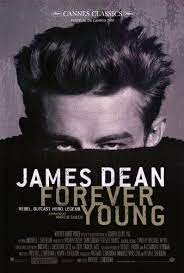
JAMES DEAN: FOREVER YOUNG
US, 2006, 98 minutes, Colour.
Directed by Michael Sheridan.
This documentary was released on the 50th anniversary of the sudden death of James Dean in a car accident, 30 September 1955. He had made only three feature films, East of Eden, Rebel Without a Cause, Giant. And the time of his death, he was only 24.
James Dean intrigued the American public during his short life, during his short film career, the suddenness of his death. He became linked in the American public mind with Marlon Brando, a Brando for the next generation. There were very speculations about his private life. There was also a feature film, 30-9-1955, with Richard Thomas, and a feature portrait of Dean played by James Franco.
While this film does provide details of Dean’s life, family background, Indiana, his ambitions, travel to New York City, visits to Los Angeles, friends in New York including Martin Landau, a relationship with Pia Angeli, his reaction to her sudden marriage to Vic Damone, a relationship with Ursula Andress, this is not on the main focus of the film – which is narrated by Martin Sheen.
In fact, this is a brief but effective compilation of Dean’s television and cinema work. Many will be surprised at the considerable extent of Dean’s television work. The researchers have gone to a great deal of trouble to find clips from so many of these programs, giving the detailed background, dates, co-stars, their place in Dean’s life and career, even appearing in Los Angeles TV programs while on location for his films, continued return to New York.
Which means then that this film gives a far stronger impression about Dean’s acting abilities, seeing him in a considerable range of different roles. It is also mention of his stage performances. However, with help from his friends, and especially a range of photographer friends who provided more than might have been expected photo shoots with him (and well incorporated into this film, quite a wide range), Elia Kazan chose him for his first major film role (and there are glimpses of him in very brief speaking roles in feature films before East of Eden).
Interestingly, at various times, there are various clips from screen tests, Dean reading with Joanne Woodward for East of Eden. Auditions and reading with Paul Newman. And auditions and readings with Julie Harris who was chosen for the film. The film spends some time on the making of East of Eden, and then of Rebel Without a Cause. During the making of Rebel, preparations were being made by George Stevens for filming Giant, James Dean eliciting interest, almost campaigning for a role. This documentary shows clips from the film, from screen tests, especially for his ageing character, and on location glimpses of Dean with Elizabeth Taylor.
The film also shows his interest in cars, buying cars, participating in racing in Bakersfield in 1955, being prohibited by George Stevens from participating in races during the filming of Giant, his final decision to buy the Porsche of his dreams, driving it to Salinas for competition, his death.
With some irony, the film includes a commercial Dean did with Gig Young about not speeding on highways and saving lives. The film also seems to underplay the death, showing the highway in the drive to Salinas, moving towards the crash and the film fading to black.
Not a definitive documentary on James Dean himself and his career but a valuable repository of scenes from his film and television work.
Upside Down
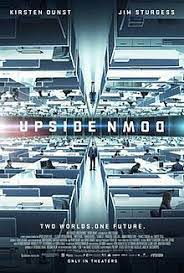
UPSIDE DOWN
Canada/France, 2012, 19 minutes, Colour.
Jim Sturgess, Kirsten Dunst, Timothy Spall, Blu Mankuma, Nicholas Rose, James Kidnie, Kate Trotter.
Directed by Juan Solanas.
Upside down is seen quite literally in this science fiction, science fantasy.
The film was written and directed by Argentinian Juan Solinas. He has imagined a different universe, twin worlds, different gravities, an upper world which looks down on a lower world, with those in the lower world appearing upside down.
A great deal of imagination has gone into the production design, the creation of the different worlds, and, especially, so many vistas of the vastness of this universe.
Life in the lower world is harsh, the story focusing on an orphan, Adam, cared for by his aunt Becky afterlife in an orphanage. There are very few prospects in the lower world. However, young Adam wanders the forests and encounters a girl from the upper world, despite the different gravities, they communicate, and a childlike love.
10 years pass. The audience knows that the girl, Eden (Kirsten Dunst) has suffered an accident and has lost her memory. She works for the huge company Transworld. In the lower world, Adam (Jim Sturgess) is experimenting with lotions with healing powers. He aspires to go to the Transworld division in the lower world, an interview, acceptance, a desk, his experiments, and friendship with his counterpart in the upper world, played by Timothy Spall.
Adam’s aim is to visit the upper world and he creates technology whereby he can defy his lower gravity. His aim, of course, is to find Eden, dismayed at her amnesia, returning to the upper world, a dinner with her, her being apprehensive, then while he is demonstrating his lotion to the authorities, she enters, asks a question and he has to tell the truth.
In the meantime, his friend and counterpart is sacked by the company – but goes to his own laboratory creating a way of combining the two gravities – and then visiting the lower world and helping Adam.
While Eden recovers her memory through her dreams, and the two meet each other, renewing the love, they are pursued by the authorities, Adam falling to his lower world thinking he will never see Eden again. But, with the help of his friend, and despite the authorities, the two are able to meet each other again.
A parable about segregated worlds, capitalistic domination, scientific advances, and a Romeo and Juliet style story.
- The title? The twin worlds? The two gravities? A romance between the worlds?
- The film as an allegory, of separation, segregation, capitalistic power and oppression? Science, technology, the search for solutions?
- The visuals of each world, the special effects, the space vistas, each world, the lower world in its darkness, the upper world and its seeming normality? The musical score?
- The credibility of this world, the explanations given, the issues of gravity, of overcoming gravity?
- Adam and Eden when young, Adam and the lower world, the orphan, and Becky, his growing up, deprivation, work, friendship with Albert? Life, wandering, looking at the upper world, the encounter with Eden, their meetings, the gravities, friendship, love? The 10 years passing?
- Adam, his work, the authorities, suspicions, taking away Aunt Becky – and her support for Adam? His skills, scientific work on the cream, the approach to the upper world, interviews, acceptance, his desk, his lab work? The encounter with Bob? Bob in the upper world? Their friendship, conversations, getting the stamps for Bob’s collection, Bob getting a message to Eden? Adam and his ambitions to defy gravity and go to the upper world?
- Albert, acceptance of the lower world, his work, Pablo, his criticisms of Adam? Adam’s plea to Albert? Their help?
- Adam, the devices for changing the gravity, his going to the upper world, searching for Eden, the audience having seen on television, knowing that she had amnesia? Adam finding her, her response, the amnesia explanation? The danger for the gravity devices heating, his having to leave? Wanting to return, communication with Eden, her fears, his reassurance, coming on too strongly, the meal together, bonding, his having to leave again?
- Adam and his inventions, the lotions, the demonstration, the transformation of the woman’s face, even coming to the demonstration, asking the question, Adam telling the truth? Her departure?
- Adam and his deception, the lotions missing the main ingredient, the authorities, the demonstration, suspicion of Adam?
- The dismissals, Bob and his being dismissed, the farewell to Adam, his work in his laboratory, finding the balance between the two gravities? Inviting Adam? Bob later coming down to the lower world, his demonstration?
- Eden, her dreams, gradual realisation of the truth? The two coming together? The authorities and the pursuit? The dangers, the gravity, flying through the space, Adam’s fall?
- His later return, the couple together, love overcoming everything?
- A fanciful variation on a Romeo and Juliet tale?
Hoot

HOOT
US, 2006, 91 minutes, Colour.
Luke Wilson, Logan Lerman, Brie Larson, Tim Blake Nelson, Cody Linley, Neil Flynn, Clark Gregg, Kiersten Warren, Robert Wagner, Eric Phillips, Jimmy Buffett.
Directed by Wil Shriner.
Hoot is not quite an accurate story but it suggests a noise made by owls – and owls are the threatened species in this film.
The film is based on a young adult novel by prominent crime writer, Carl Hiassen (who appears momentarily giving a message to the company boss). It is very much geared to younger teenagers who can identify with the characters and the cause. The film also plays to the younger audience by making some of the adults comic figures, especially in Blake Nelson’s Curly, the supervisor at the site of a forthcoming pancake parlour and Luke Wilson as the local policeman.
Logan Lerman, emerging as a strong screen presence at this time, the Percy Jackson films…, Is the sympathetic Roy. Cody Linley is the tearaway, Mullet Fingers, responsible for the campaign against the building of the pancake parlour. It is a surprise to see Brie Larson as Beatrice (some years before her Oscar for Room). Robert Wagner has a few moments at the end of the film as the local Mayor.
The film has sequences at school, on the school bus, geography classes. It also shows young protest, Mullet Fingers and his sabotage, his personal problems, yet his vision of the Florida environment.
Which means that the film is a blend of the serious and the comic, some comments treating the film as an adult film and finding it wanting. Younger audiences will enjoy it – and find some motivation for environmental concern.
- Young adult story? For younger teenage audience? Environmental message? Protest? Achievement?
- The Montana opening, the vistas? The contrast with Florida, flat, towns, schools, tourists, the beaches, the waterways? The musical score?
- Roy and his story, his age, relationship with his parents, love of Montana, moving to Florida, his first day at school, the bullying by Dana, the next day Roy punching him and breaking his nose, having to write a letter of apology, Dayna and his mother and their squabble, further threats? Beatrice and her dominating Dana? Dana and his pursuit of Roy, the snake traps? Arrested, interrogated?
- Roy, his family, his father and justice work? His seeing Mullet Fingers from the bus, getting out, the attack by Beatrice? Finding him, the snakes, sending him off? The further explanation of the story, Mullet Fingers and the protest, the site, the family story, Beatrice, friendship with the Roy? The cause?
- The situation, and Paula’s Pancakes, the hundredth shop, the land, the owls, protection, the fraud with the environmental report? Curly, on guard at the site, the sabotage, his desperation, the phone calls to Muckle, Muckle, the insensitive boss, Kimberly, her performance, the threats, going to Florida, the bulldozer, the seat missing, Muckle and his desperation, bringing the opening forward? Curly and his reaction, the snakes, the traps, teaming up with Kimberly?
- The police, Lincoln, the touch of the stupids, working by the book, on the site, the discussions with Curly, the regulations, on guard, sleeping, the mud and the scratches? The chief, his demotion, the little vehicle, giving Roy a lift? His suspicions, pursuit of Roy? Telling Roy’s parents about the dogs and the bite? Pursuing Dana, interrogation? The finale, getting the documents, getting the new car – and still bumping it?
- Mullet Fingers and Roy, the explanations of the environment, on the boat, the fish, the exhilaration?
- Mullet Fingers, the sabotage, Curly bringing the dogs, fear of the snakes, Mullet Fingers being bitten, hospital, Roy giving his name, Mullet Fingers escaping, Roy and his parents?
- The three overhearing Muckle, the flyers, rounding everyone up for the opening, the school class, tying up Muckle? Getting the documents? His father’s advice?
- The mayor, the opening, the bulldozer, the noise of the owls, the one-minute silence, their appearing, television cameras, Kimberly speaking, donating the area for our Park? The company having to follow through? Muckle arrested?
- Happy ending, Beatrice and Roy and their friendship? Dayna and the tough coach?
- A film designed for younger audiences, based on the novel by Carl Hiassen, the message?
Death to 2021
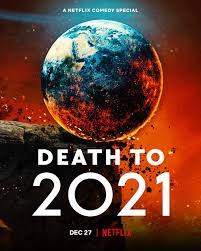
DEATH TO 2021
US, 2020, 60 minutes, Colour.
Hugh Grant, Tracy Ullman, Samson Kayo, Hopper Jackson, Diane Morgan, Cristin Milioti, Joe Keery, Stockard Channing, narrated by Laurence Fishburne.
Directed by Jack Clough, Josh Rubin.
As one commentator put it, ‘I enjoyed it much more than I expected’.
In checking out the review of Death to 2020, the response was much the same – and, so, incorporating some of the same comment.
While the title sounds universal, and there are some sequences from other countries in the world, i this is a film very much for an English-speaking audience, focusing principally on the United States, giving attention to the United Kingdom.
For those of a liberal persuasion, it is very funny indeed, hitting so many of the right targets! For those of a more conservative perspective, it will not be very funny at all, especially in its targeting of Donald Trump.
In 60 minutes, a team of writers have been able to assemble key sequences from 2021, highlighting each month in which they occurred, edited well and with punch, so that there is an overview of what the year was like, especially in the United States.
While the whole film has been narrated by Laurence Fishburne, reporter played by Samuel L. Jackson last year has been taken over by a hard-drinking journals, Stockard Channing. Hugh Grant is, again, disguised as an eccentric British historian, Tennyson Foss, delivering all kinds of opinions, prejudices, irritations in the inimitable Hugh Grant fashion.
And, there are a number of returning guest cameos throughout the film, Samson Kayo as a put-upon scientist explaining the covid situation while his words are accompanied by incongruous music; Tracy Ullman sends up all those Fox News commentators. Two fictitious characters return with very strong satirical message, played by British comedian Diane Morgan, and Kathy Flowers, played by American comedian, Cristina Miliotti, provide a kind of dumb chorus, Morgan as Gemma Nettick in England, very limited in her knowledge and expression, sitting on lockdown with her television set and Cristin Milioti as Kathy Flowers all gush, innate prejudice, believing every conspiracy theory, even participating in January 6 riots. Joe Keery appears again as the young man exploiting it all on social media.
The screenplay abounds with verbal jokes which come through very quickly – and, there are some visual jokes, especially when an Internet page or You Tube clip is shown and there are funny indications of further videos on the side.
But, the film is very telling about President Trump in 2021, his refusal to admit defeat, and a focus on the January 6 uprising in Washington. One notable omission is any treatment of China and his relationship to the US.
This film should have an important place in every archive as a reminder, in mockumentary style, of course, of what 2021 was like, especially in the United States and the United Kingdom
Leigh
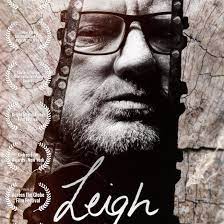
LEIGH
Australia, 2021, 100 minutes, Colour.
Leigh Conkie.
Directed by Ryan Gaskett.
“Portrait of the artist as a chainsaw sculptor”. And more, much more.
The sculptor is Leigh Conkie, from Elfin (if you put his name in Google, his address, 1305 Maine Road, Eltham immediately appears!). He is a Melbourne character and Melbourne features strongly in this documentary, in his suburb to Research and Diamond Creek, at a competition for chainsaw sculptors at the top of Mount Dandenong, city sequences outside the Age building, outside the courts in William Street. And, a self-conscious confession, this reviewer was not aware of Leigh Conkie.
We are treated to quite a number of stories within stories but the first aspect to note is the range of visuals of Conkie sculptures, and seeing him at work with his chainsaw, cutting off large blocks of wood but also fine-tuning, smoothing the detail of the human characters, the animals, monuments. It is a pleasure to look at these sculptures.
But, Leigh Conkie has had many difficulties in his life. In his 40s during the making of this film over three years, he is a rough and ready type, with an effing-spattered vocabulary, something of a contrast with the interviews with his many friends and neighbours, ready but much less rough. And, in his younger days, experience and depression, taking many drugs, and in later years becoming a drinker, he admits that he is not always reliable, drinking to get to sleep to forget the pressures of life. Nevertheless, he has persevered with his sculpting for several decades, surprised at first at being paid well for his sculptures, but always wanting to sculpt for the sake of his art.
While he is a big tall man, he actually can be quite soft-hearted. There is an admirable section of this film where he speaks so well of his father, with affection, and especially so of his mother. And plenty of photos of his parents with himself and his brothers. Quite wonderful to hear this man speaking so warmly of family. On the other hand, what is revealed is that he was abused at school at the age of seven by the school principal. This becomes a major theme of the film.
Conkie eventually has some strong things to say about sexual abuse, paedophiles, recounting some of the blurred memories of his experiences, with a photo of the alleged abuser up there on the screen, later named quite explicitly. Eventually, he does go to the police, an awkward experience but one that he feels it is necessary, eventually charges being laid against the abuser, now in his 80s. There is reinforcement of this theme of sexual abuse with substantial interviews with radio campaigner, later politician, Derryn Hinch. Hinch is rather calm, seated for these interviews, but reminiscing about the stances by abusers, the use of defence lawyers, the reduction of charges, and the effect of court cases on the survivors. It is a reminder of Hinch’s stances over many decades.
Eventually, some other survivors come forward and the perpetrator is found guilty, sentenced to prison. Sadly, because of his drug past, the defence lawyers are able to get Conkie’s testimony dismissed as unreliable.
In between these episodes concerning the abuse, audiences are surprised that they have a tour to Japan, to climbing Mount Fuji, Conkie deciding that this is a good purpose, going off the drink, going on a health diet, walking, gym exercises… The sad thing is that for many years he has been plagued by gout, in his knees, but, especially some excruciating gout pain in one of his thumbs. He makes a worthy attempt to climb to the peak of the mountain, while enjoying Japan itself and the people.
And one other theme. He is compassionate towards refugees, those on Manus Island in Nauru, deciding to sculpt a statue of a refugee (and we watch this in some detail), with the plan to situate it, in the early morning hours, on the grounds in front of the Age building, across from Southern Cross station. The director has his cameras watching this episode as well as people passing by, generally not noticing, and the removal of the statue. A positive ending to this story is that it was granted to the Asylum Seeker Resource Centre where Conkie visits it.
And, all of this, with sympathy and visual flair for 100 minutes. And postscript: go to the link, https://www.3aw.com.au/photos-chainsaw-artist-honours-war-heroes/with photos of more recent, striking sculptures honouring war heroes.
Chevalier Blancs/ White Knights
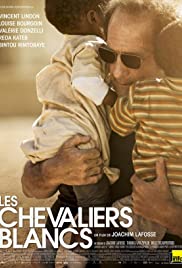
CHEVALIERS BLANCS/WHITE KNIGHTS
France, 2015, 112 minutes, Colour.
Vincent Lindon, Louise Bourgoin, Valerie Donzelli, Reda Kateb.
Directed by Joachim Lafosse.
This is an African story but it is also a French story, raising the issues about European interventions in Africa in the 21st-century, memories of the colonial background, the consequences for the African people themselves, and the role of NGOs and their good intentions.
Veteran Vincent Lindon and plays the head of an NGO, strong-minded but having to act with delicacy and integrity, working with the French volunteers and their different ambitions and aims, working with the local chiefs, discovering mismanagement, also finding a group of children and their mothers who need rescue.
While much of the film could be seen as documentary -like, it is also a strong drama with tensions for the head of the NGO, diplomacy, split-second timing, the need for aid, the reaction of the African chiefs.
The issues outlined in this film still continue, especially with covid 19, and the epidemic crises of 2020…
- An African story? A French story? Europe intervention in Africa? NGOs? Colonial background?
- The story of an NGO, its authority, the members and volunteers, their mission, orphans in Africa, the rescue, transferred to France and its opportunities? Authority? The legal or not?
- The African country, unnamed? The presentation of the people, the arrival of the French, the clamour, the application for jobs, the travel to the villages, the Chiefs, the discussions? The military? The attack on the car? The reprimands from the military authority?
- The stance of the film, in favour of the interventions? Critical of the interventions in their manner? A postcolonial story?
- Jacques, leader of the group, intense, his personality, the group, the arrival, the intentions, the issue of planes, vehicles, meeting with the Chiefs, finding the children, the thwarting of the ambitions, the Army reprimand, the discussions with the group, clashes? Support of the journalist?
- The visits, Jacques and the personnel, the plains, commandeering the plane, the later reprimands? The finances, budgeting? The response of the Chiefs, Jacques and suspicions, the issues of Finance?
- The finding of children, the mother wanting to give her baby and the refusal, orphans and the search for them? Eventually rescuing some, washing them, feeding them? The prospects?
- The development of the mission, success or failure? The interventions? The visits, the clashes? The dangers? Getting more children? The planes and getting out?
- A film making audiences aware of voluntary organisations, their motivations, going into dangerous places, having a visual and audio record of what they did, the role of journalists, whether this mission was appropriate or not?
